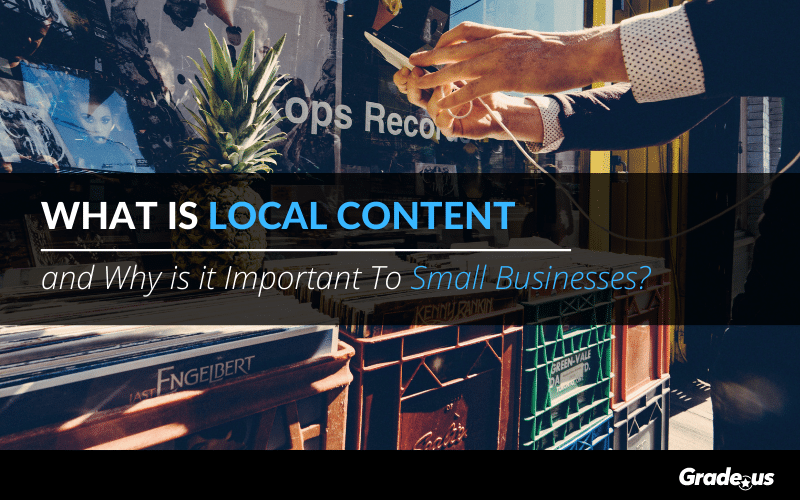Local content is a challenge.
It’s a difficult topic for many local businesses. Small businesses aren’t entirely sure what it is. They don’t know why they need it, what they should be doing with it, or how to create it.
Multi-location businesses don’t always invest in it across each location.
Many small businesses already feel they’re drowning under the list of marketing tasks they’re “supposed” to do. When you’re running a business, marketing and advertising can feel like the least important priority.
Local content doesn’t need to be source of disdain or ambivalence.
Table of Contents
Get the Reputation You Deserve with Grade.us
What is local content?
Small business owners are confused about local content. Is it different somehow from regular content? What makes local content so special? The distinction is actually a bit confusing. Definitions are important, especially if we’re going to learn about local content. The problem is similar to defining ‘What is Local SEO?‘ It’s all about context.
Local content is any type of creative substance (written, visual, 0r aural), that exists in the context of a specific geography.
More specifically relevant to digital marketing, Search Engine Watch defines it as:
“Local content… can help search engines contextualize your website’s niche to its local service.”
Your local content tells people and search engines what your business, product, or service is all about in layman’s terms.
Which is what most small businesses are already doing, right?
Actually, that’s not what most small businesses are doing.
That’s not even what most large businesses are doing. Okay, what are they doing then? I mean they’re creating content, they’re sharing and syndicating it on social media. Isn’t that what you’re supposed to do?
Absolutely. But that’s not what’s happening.
The local content most small businesses create is essentially noise. It’s actually worse than noise because it creates confusion, stress, and anxiety.
Greg Gifford shared an example:
“Our Dallas Toyota dealership Toyota of Dallas is your source for the best Toyotas if you’re looking for a new Toyota or used Toyota in Dallas, Texas, or the area around Dallas. We’re conveniently located to also serve Richardson, Garland, Plano, Addison, Allen, Frisco, McKinney, The Colony, Euless, Bedford, and more in the Dallas area. Our Dallas Toyota dealership has great deals on Toyotas near Dallas, so come see us at Toyota of Dallas, right off the highway in downtown Dallas.“
See what I mean?
Noise.
This kind of thing happens all the time. I mean, couldn’t they convey the same idea in a single sentence? “Toyota of Dallas has all 19+ Toyota models in stock.”
Does this mean everything businesses share is simply noise? Not at all. Quite a few small companies share helpful, meaningful content. But compared to the majority, these businesses are the exception, not the rule. Am I saying every single piece of content you share will be meaningful to every customer?
Nope.
Because the meaning, in this case, is subjective and heavily dependent on context. A customer who’s in the market for a car or truck will find a discount, incentive, or reward meaningful. Customers who just purchased a car? Not so much.
You can’t control context for your customers.
Who is local content for?
It’s for everyone else but you.
Your customers get the education and information they need to buy. Partners, suppliers, and vendors get the data they need to help you. Reporters, industry professionals, influencers – they all get what they need to promote your business.
What does this mean for you?
Your local content needs to provide meaning and support to those around you. Creating noise and sharing unhelpful content makes it more difficult for others to work with your business.
Okay.
How do you go about creating meaningful local content? You build content that…
- Has a purpose: Local content needs a purpose to survive. Purpose shows customers (a.) the amount of time and effort they’ll need to invest in your content and (b.) why they should invest.
- Creates fascination: People want to be awed, to be surprised. Research shows emotion drives attention. The more compelling and fascinating your message is emotional, the more attentive people are to your message.
- Is clear and concise: When your content is clear, the message and idea behind it are simple, showing customers your intent is to clarify. This makes it easy for customers to make their decision.
- Depends on context: Your content should serve the desires, goals, fears, and frustrations of your audience. If customers want your address and phone number, provide it. Are they looking for a compelling reason to buy? Share one.
See the problem here?
The vast majority of local content isn’t meeting these criteria. Am I saying your address needs to be so fascinating that customers read it over and over to themselves?
Absolutely! (LOL)
Okay, not really. Here’s what I am saying. Your local content should be layered, in-depth, and comprehensive. This isn’t as simple as optimizing your GMB listings. Everyone’s doing that, so you’ll need to dig deep to attract more attention.
But how?
Here’s a shortlist of local content types.
- Google My Business listings and local packs
- Reviews via mainstream sources like Yelp, Google, Facebook
- Reviews via specialist outlets like ZocDoc, Avvo, TripAdvisor, etc.
- Local influencer reviews
- Contact, address, and about pages on your site
- Social media profiles (including location-specific listings)
- Local advertising
- Local press coverage
- Events in your local community
- Local PR
- Viral content
- Blog posts
- Guest content via local sources
Alright.
What does local content look like when it’s done well?
Let’s take a look at Chick-fil-A to find the answer. Chick-fil-A is a fast-food restaurant with more than 2,200 locations. They’re well represented in many of the content types I’ve listed above.
Here’s the interesting thing about Chick-fil-A.
They’re consistently able to meet the four criteria I mentioned earlier (e.g., purpose, fascination, clarity, and context). Even better, they’re able to do it in a way that’s consistent and appropriate.
They provide customers with contact and location data.
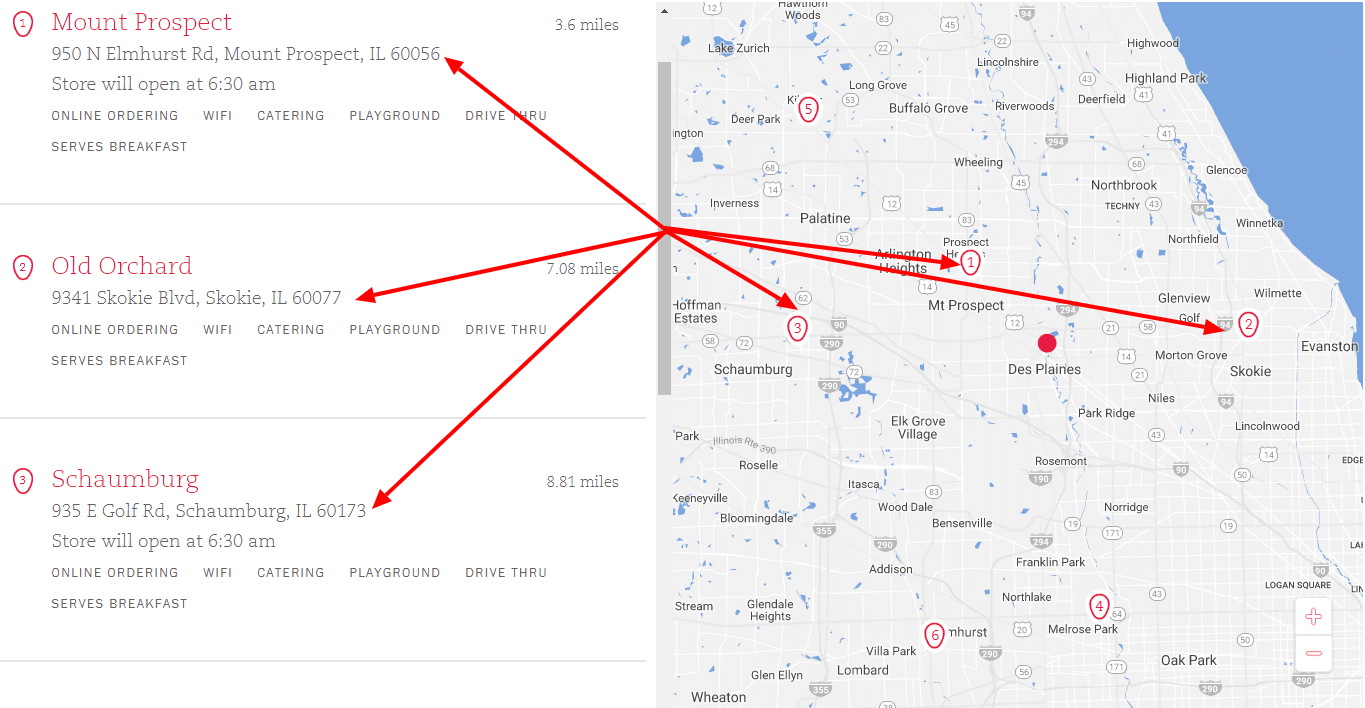
They claim, complete, and optimize each of their GMB listings.
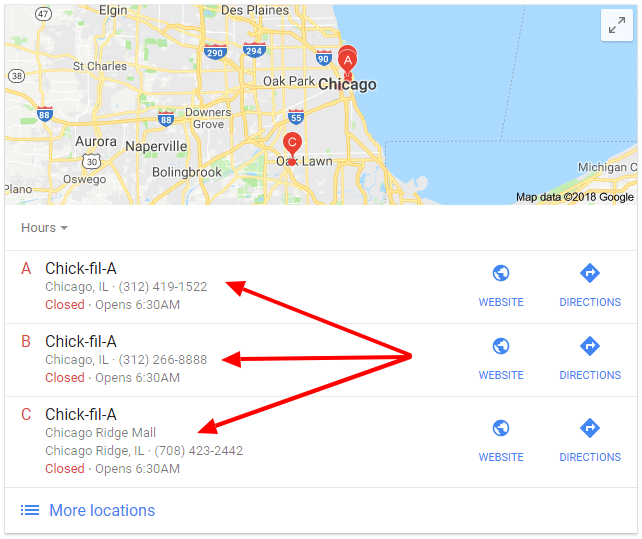
That’s incredible when you realize they have more than 2,000 locations in the US alone. Next, they incentivize customers to write a review. But they don’t harass customers for a review. They simply reward customers who check-in with a free cookie or treat.
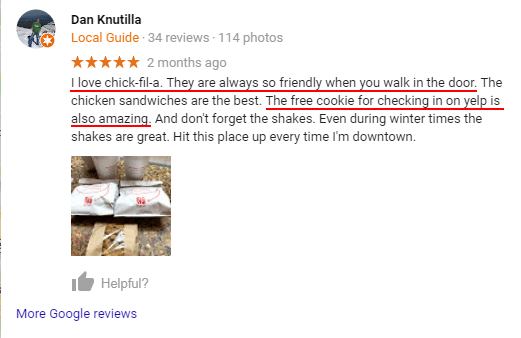
What are customers more likely to do once they’re checked in and are happily munching on a cookie? Write a five-star review, of course!
What about local events in their communities?
Chick-fil-A has that covered too.
- Chick-fil-A delivered free food to motorists who were stranded in a snowstorm. It made such a large impact on the public that people asked Snopes.com to verify that this story was true.
- They did it again for travelers stranded at Atlanta’s Hartsfield-Jackson airport.
- They offer mom’s valet.
What about Local PR?
A Fort Bragg army wife sat down to eat with her family at a Chick-fil-A restaurant. While they were eating, she was greeted by the Chick-fil-A mascot. The mascot turned out to be her husband, who had returned home early from his deployment overseas.
Chick-fil-A shared the video on their local Facebook page.
What about viral content?
Chick-fil-A, via Taco Truck, shared Chickens vs. Cows. A short video about their mascots… standing up to the… uh…competition.
Can you see what’s happening?
Chick-fil-A isn’t specifically looking for an opportunity to create “local content.” They’re looking for opportunities to serve; to do something incredible, fascinating, or valuable for those around them.
Let’s look at a few more examples.
Legal: Attorney Theresa L Panzica
Theresa L Panzica is an award-winning real estate attorney based out of Chicago. Her boutique firm uses a mix of local content, including online reviews, citations, social media, and industry-specific sites (e.g., Redfin, Super Lawyers).
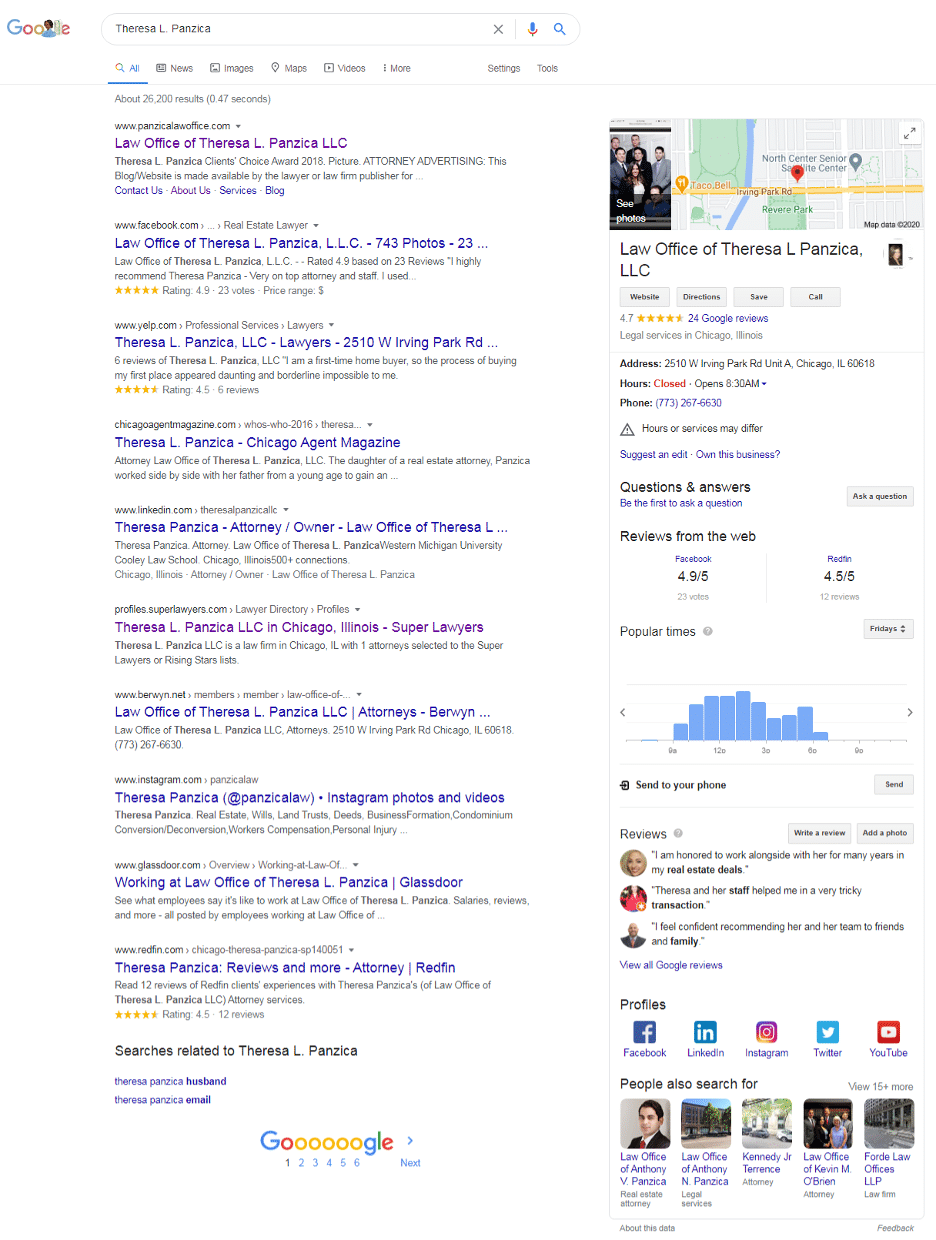
She uses photos (via Facebook and Instagram to promote her practice), third-party publications like Chicago Agent Magazine and Super Lawyers.com, and hyper-local publications like Berwyn.net.
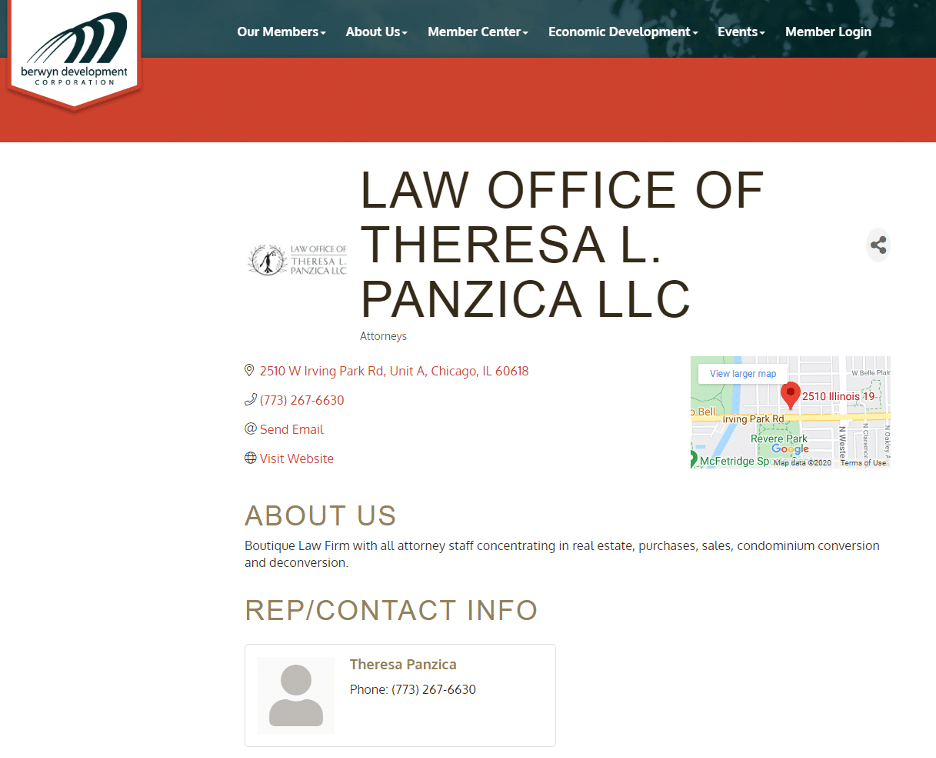
Her law firm has a strong review portfolio and review profiles on mainstream sites like Google, Facebook, Yelp, Avvo, and industry-specific sites like Redfin and Avvo.
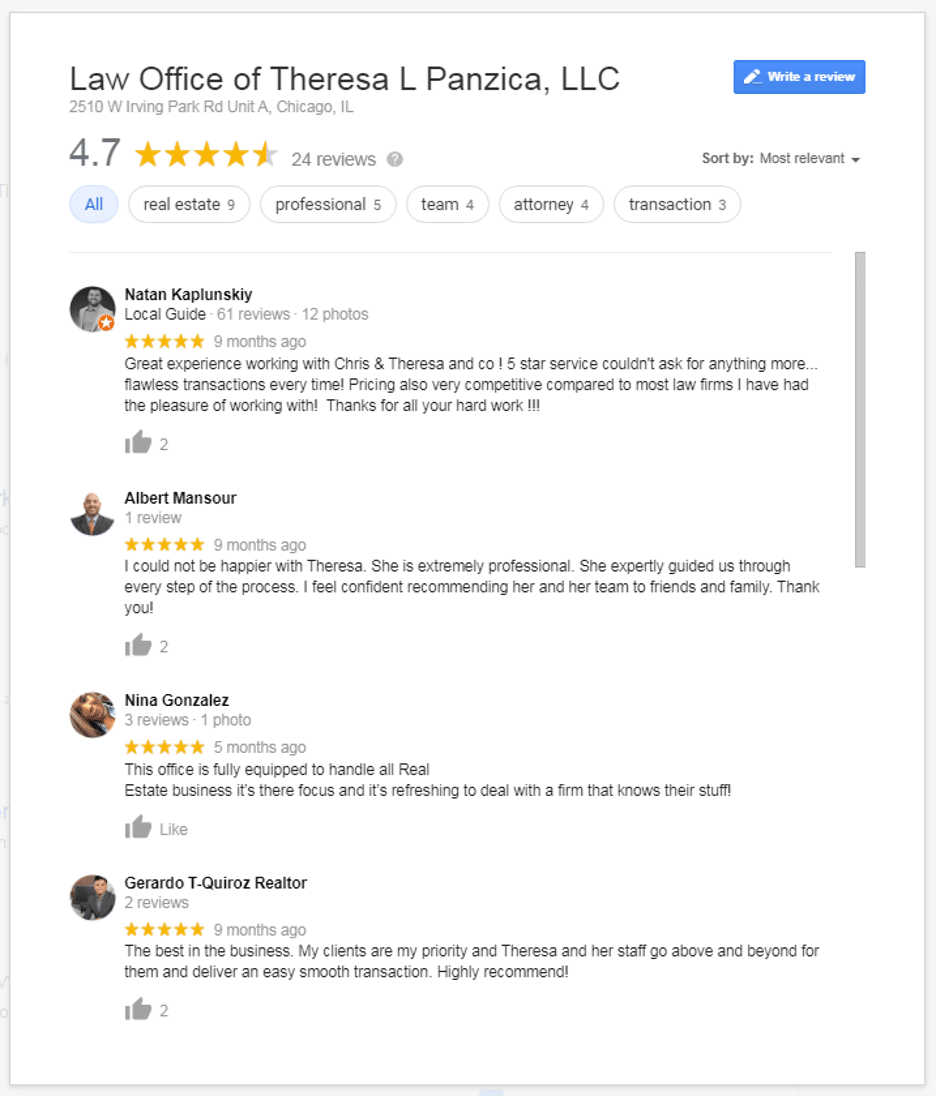
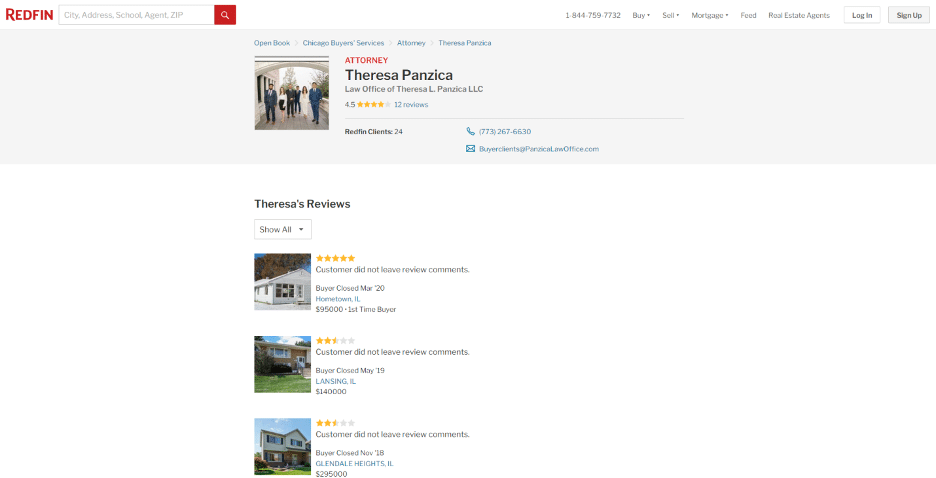
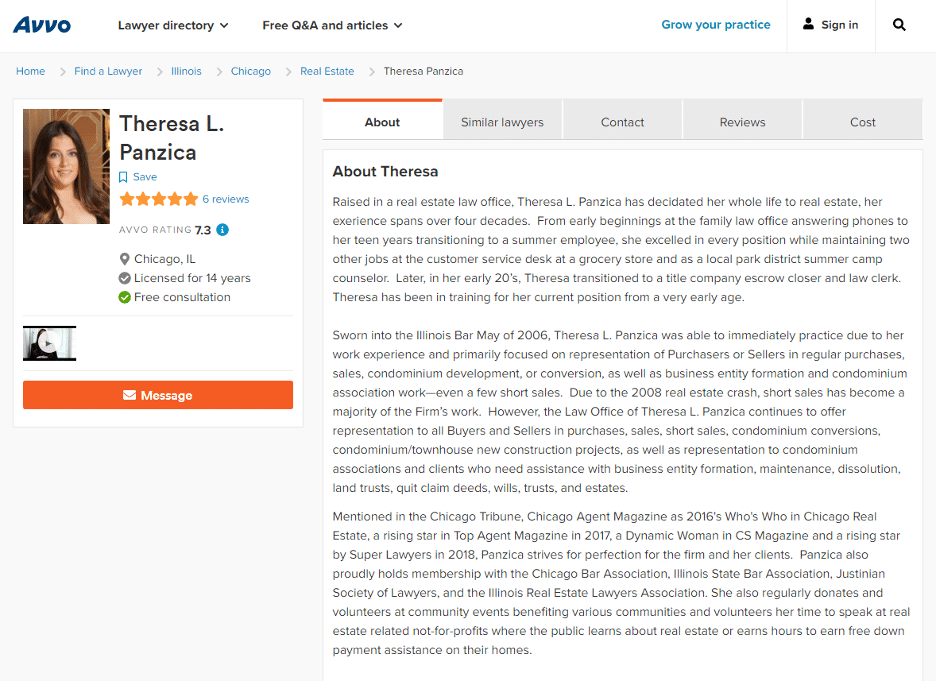
Panzica is unique because she’s an attorney who also has extensive experience buying and selling real estate. She uses citations, online reviews, social media, local content, education pieces, and her law firm website to share local content with prospective clients.
Healthcare: Dr. David Shanker, MD
Dr. Shanker is a dermatologist in Northbrook, IL.
He’s worked with patients in his practice for more than 35 years. He serves patients of all ages — children, teenagers, and adults. Dr. Shanker has decided to focus his local content on his review profiles and citations. If you look at the search results for his name, you’ll see that he has a strong review portfolio.
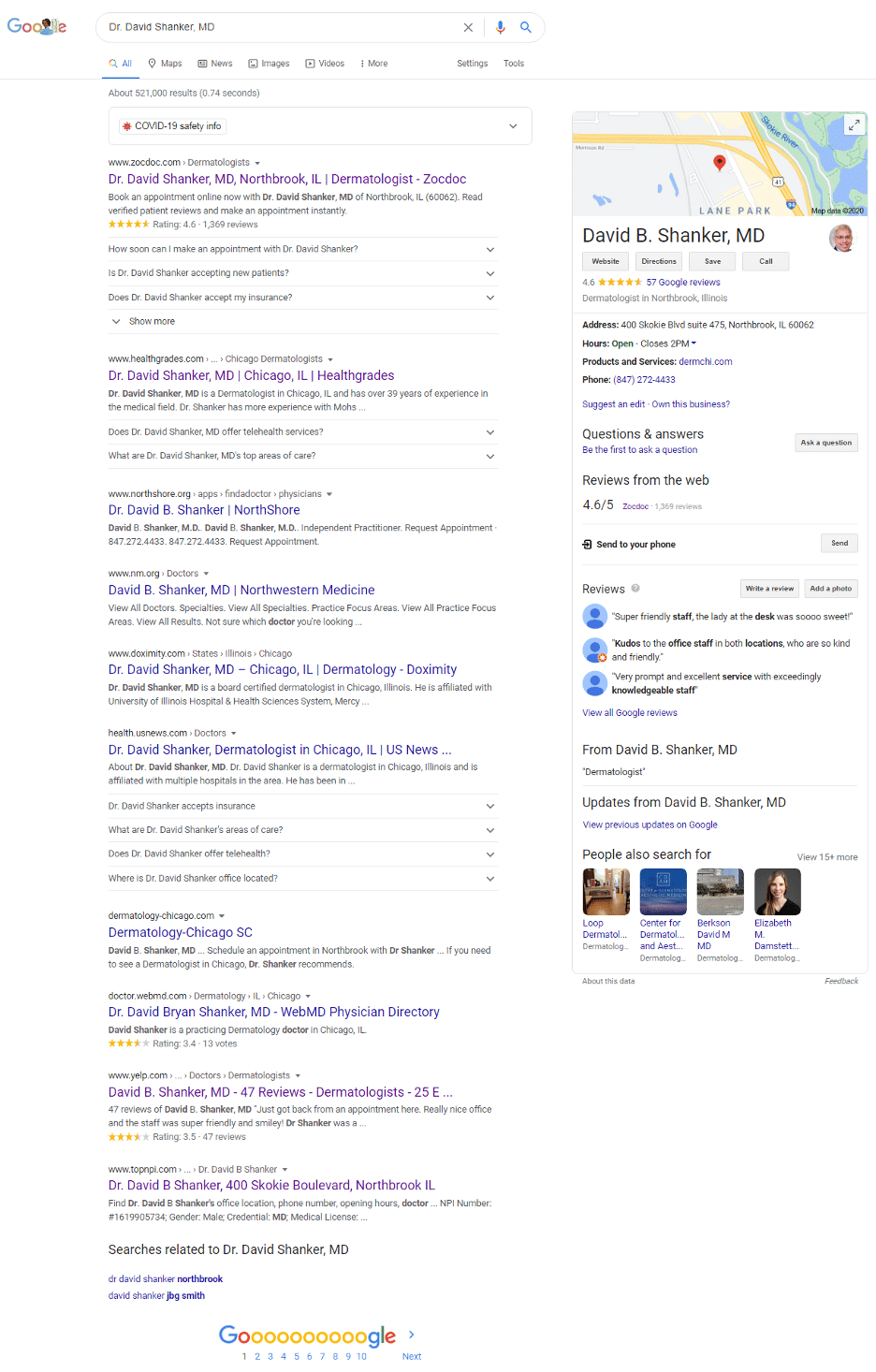
Looking at the search results, we can see that Dr. Shanker has profiles on Google, Yelp, Zocdoc, WebMD, and Vitals. It’s common for medical professionals to be listed under a hospital or facility that’s part of a network. They typically don’t have their own website, so individual medical professionals need to branch out using tools like reviews and citations.
Like many medical professionals, Dr. Shanker isn’t as active on social media.
Real Estate: The Matt Laricy Group
Matt Laricy is a Realtor in Chicago, IL. He’s a third-generation Realtor and the managing broker for Americorp Real Estate, the company his father started. One thing that stands out about Laricy’s use of local content is the variety. He understands relevance, and he uses local content to build a relationship with clients before they’ve met him.
Looking at the search results for his name, we see that he has 1,165 reviews on Zillow with an average rating of five stars. He also has 239 reviews on Google, 121 on Facebook, and 168 on Yelp.
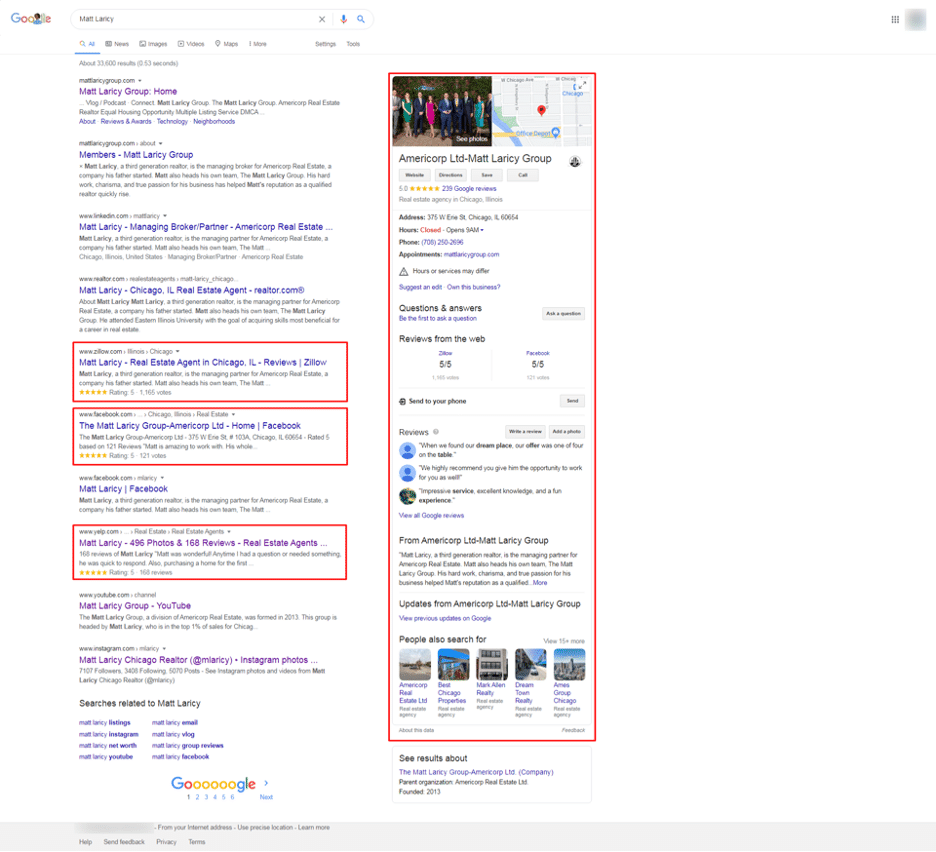
The vast majority of his clients leave glowing reviews like these:
He uses video to showcase and sell his local listings. Facebook posts to promote his listings.
Laricy shares content on Instagram, Twitter, and LinkedIn. He has profiles in local websites and magazines, including Chicago Agent Magazine, Chicago Mag, and Homes.com. He’s a local columnist on Inman.com, covering real estate topics.
His local content includes:
- Online reviews (via user-generated content)
- Social media content
- Guest posts on relevant or local publications
- Video listings on YouTube
- Website information
- Contact details
As you can see, Laricy doesn’t rely primarily on written content. He layers his content, saturating his target audience with compelling information about him.
Home Services: Highlights Chicago Electrical Services
Highlights is a family-owned business.
They’re electricians with an 11-year history in Chicago. Here’s what’s interesting about their business. While businesses in other industries diversified their local content, they decided to make things specific. Like providers from different industries, they’ve saturated the market with local content. Unlike local providers, they’ve focused almost exclusively on review listings and local citations.
Take a look at the search results for their business name.
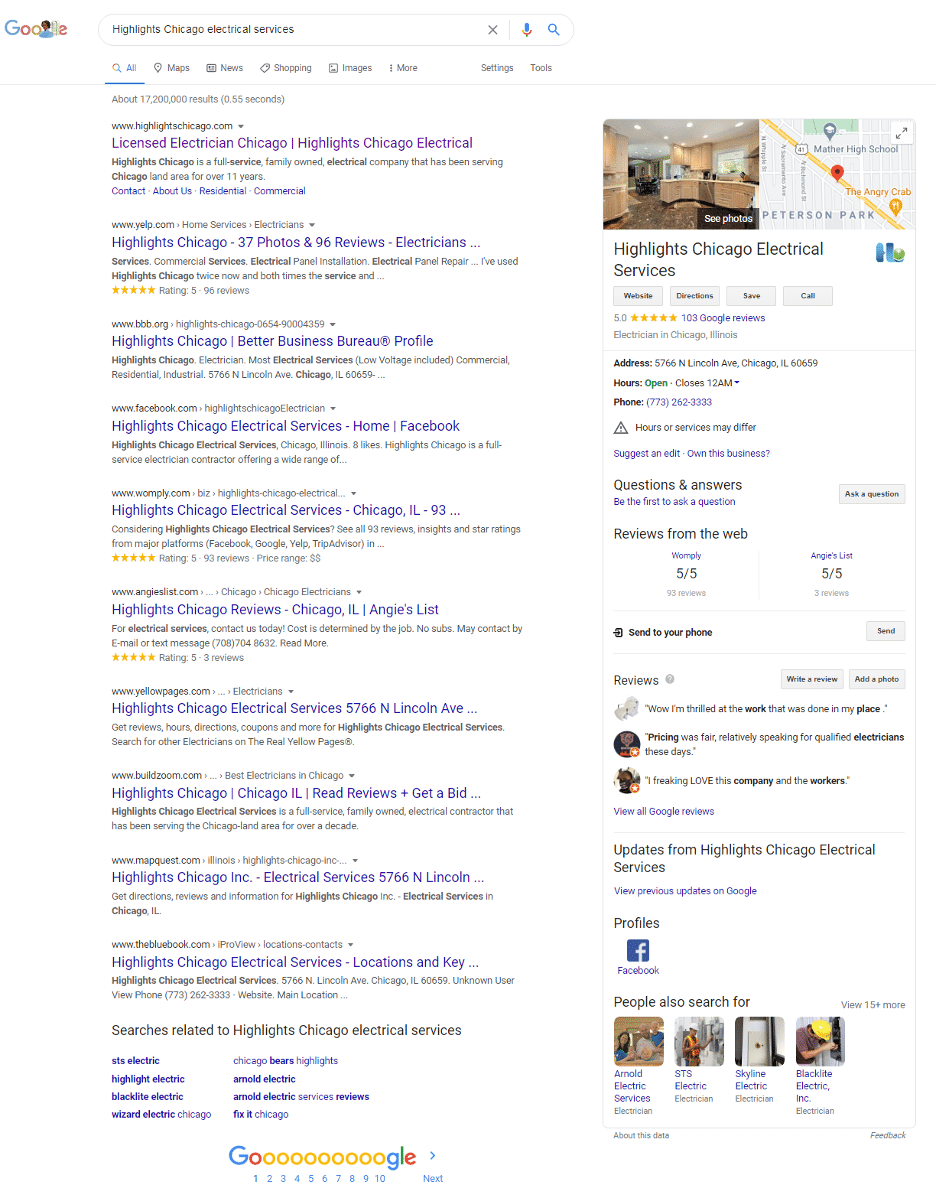
See what they’ve done?
They’ve focused their attention on claiming, optimizing, and maintaining their profiles on a variety of review and local sources, including:
- BBB
- Yelp
- Angie’s List
- Yellow Pages
- The Blue Book
From the looks of things, it seems they’ve had some help with their profiles. If you’re in an industry where visuals don’t play a prominent role, this approach can work, provided that you claim profiles that show will in Google search results.
There’s a downside to this strategy.
Citations alone aren’t enough to boost conversions. You’ll need online reviews and other forms of local content to make that happen.
Local content comes in two flavors, you need both
- Educate your audience. Education attracts our attention. Most of us are curious and eager to learn. Education encompasses teaching and entertainment. The more you educate, the more customers are drawn to you. Teach your audience to laugh. Educate them about your values, their problems, or fears, and you have their attention.
- Inform your audience. Information converts attention. When it’s time for customers to decide, there are questions, fears, objections, and risks. Information soothes these fears, giving customers the data they need to choose. Are you open late? What’s your refund policy? Do you take PayPal? Where can I find your nutritional information? When will I begin to see results?
Local content is an opportunity in disguise
Many small business owners aren’t entirely sure what local content actually is. It’s easy to see local content as a headache, another list of things you have to complete. That perspective makes sense if you don’t understand the power of local content.
You’re an insider now.
If you’ve read this far, you’ve seen what local content can do. The opportunity is there if you’re willing to do the work. Small businesses don’t need local content, your customers do. This makes it important. Follow the strategies and tactics I’ve shared, and you’ll find creating local content is a pleasure.

